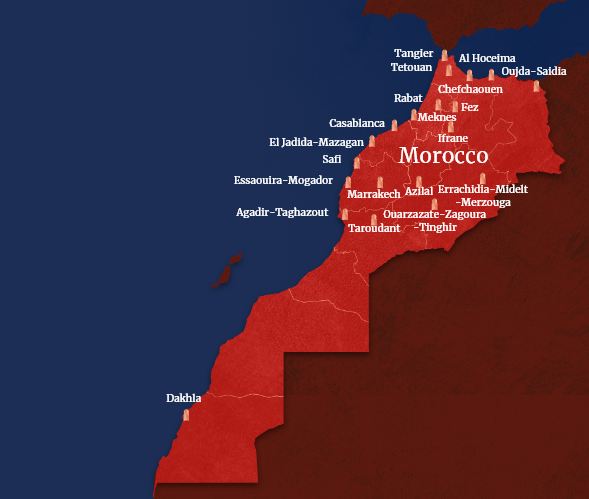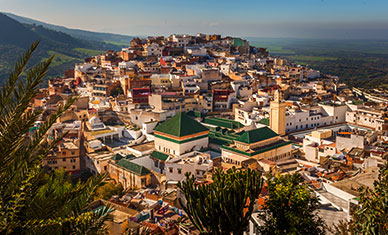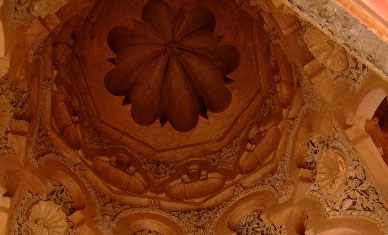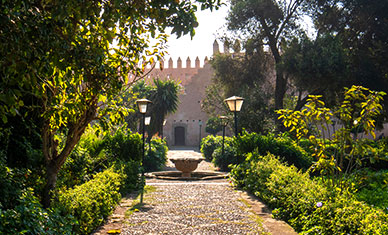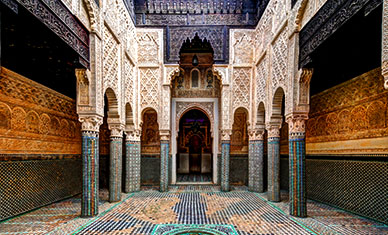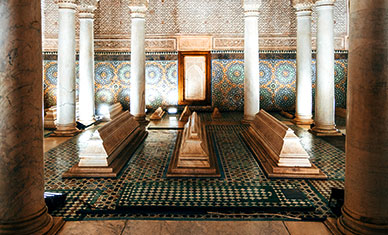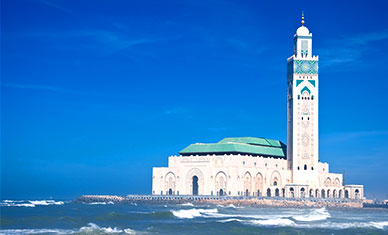Marinid dynasty
Founded by the Amazigh Chief Abou Yahia, with Fez as its capital, the Merinid dynasty overthrew the Almohads by driving them out of the Maghreb. Their reign didn’t last long, the Merinids were defeated by the Portuguese who attacked the coast through Ceuta and the Strait of Gilbraltar. Motivated by the transmission of religious values, the Merinids built several Zaouias, mosques and Koranic medersas such as the one in Salé. Several achievements and foundations symbolize this dynasty, the decorations in wood and stucco, roofs with glazed tiles, glazed ceramics, etc. The necropolis of Chellah, located in Rabat, contains vestiges that best represents the wealth of this dynasty in terms of culture, history, architecture and religious institutions.
